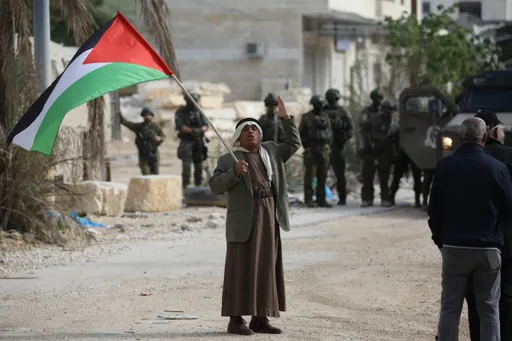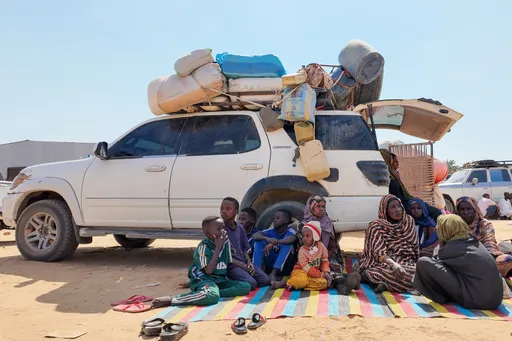Every year, millions of Shia Muslims gather in the southern Iraqi city of Karbala, on one of the world’s largest but least publicised pilgrimages. They come together to remember the Prophet Muhammad’s grandson, Hussein, who was killed in battle in the 7th century.
This highly significant and spiritual event is called Arba’een, which translates from Arabic as “forty”. It culminates 40 days after Ashura, which marks the day of Hussein’s death.
Last year Iraqi Shia clerics said around 13 million people took part in Arba’een, and as many can be expected again this year.
Visitors make their journeys to the city of Karbala on foot, taking between one and four days to walk from Baghdad, 100km from Karbala, or from the shrine city of Najaf, 75km away.
Arba'een is more than a religious occasion: Iraqis, as well as millions of foreigners from as far and wide as the USA and India, come together in a festival-like atmosphere.
Service stations known as mawkibs line the entire route, shutting down highways into Karbala for the festival period. Volunteers working from tents offer sugary tea, foot massages and beds for the night to weary pilgrims, who carry belongings on their backs or on carts of all shapes and sizes.
Lost-and-found services reunite children gone astray with their parents, and families come out to offer home-made juice and meals cooked up in enormous metal vats.
Cows are penned in ready for slaughter, while live sheep trot alongside pilgrims, looking somewhat out of place against motorway signs and the tarmacked roads. Their wool is handed out for luck and good health on the journey.
Meanwhile, behind the scenes on the mawkibs, women bake piles of half-metre-wide flatbreads to feed the millions of visitors. One of Arba’een’s defining elements is hospitality: everything offered on the route is donated free of charge. Festival-goers do not pay a dinar.
Elsewhere, participants re-enact Hussein’s last days at the Battle of Karbala, complete with horses, camels and costumes. Visitors and volunteers alike say they join Arba’een to pay respects to the 7th-century leader, to serve their communities, and to strive for peace in Iraq.
The pilgrims’ destination is Hussein’s shrine in the heart of Karbala city. One of the most revered sites in Shia Islam, it incorporates a mosque, a clock tower, and multiple precincts and is intricately decorated with mirrors, real gold and blue tile work.
As visitors approach the complex, visible signs of devotion grow. Members of the black-clad crowd cry, wail and beat themselves, often seemingly overcome with emotion.
In previous years, sectarian violence has seen worshippers killed in bomb attacks along the route. In 2016, Daesh (Islamic State) suicide bombers disguised themselves as pilgrims before detonating in Ain al-Tamer, 50km from Karbala, resulting in up to six deaths.
Yet with the Islamic State group largely routed from Iraq, and the relatively peaceful election of new President Barham Saleh in early October, pilgrims’ spirits are likely to be higher this year.
Visitors can still expect tight security, including body searches at checkpoints and a heavy police and army presence.
Nevertheless, local leaders are hoping Arba’een will bring people together and prove a successful tourist attraction. One of the world’s largest gatherings shows that even in a country ravaged by war, community giving is alive and well.
























